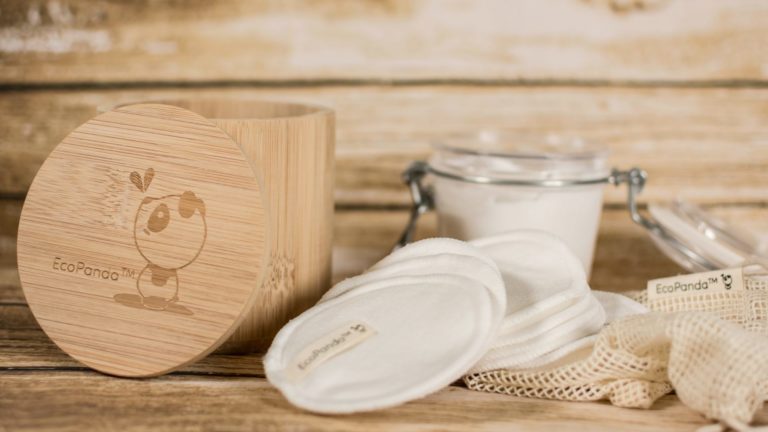In a world where there’s pressure on businesses to be more sustainable, it’s not surprising that many people are expanding their focus from simply meeting legal requirements to tackling wider sustainability issues.
Incidences of companies developing business models that go beyond their environmental responsibilities and meet the triple bottom line (people, planet, and profit) have been on the rise for several years.
Nevertheless, it remains a challenge to find truly sustainable product solutions that also offer good financial returns.
To be sure, at least part of this difficulty lies in that while environmental responsibility is top-of-mind for us all today, profitability was very much at the root of business success in earlier times.
What are sustainable products?
Sustainable products are both environmentally friendly as well as socially responsible.
Ian Peterman, CEO Tweet

Sustainable products are those that have a low impact on the environment and can be easily recycled. These are fabricated from “green materials” such as hemp, bamboo, or recyclable aluminum. It is usually less toxic than its non-sustainable counterparts and manufactured with recycling in mind.
Sustainable products are made from materials derived from renewable resources such as corn or other plant sources to reduce reliance on fossil fuels and other non-renewable natural resources.
As a result, sustainable products help to reduce global warming because they do not require large amounts of energy for transportation from overseas factories. Another advantage is that these products often cost less than those made from petroleum-based plastics due to lower production costs and subsidies by government programs.
The difficulties of finding truly profitable sustainable products

Sustainable products are profitable, it just takes more work to make it happen.
Ian Peterman, CEO Tweet
While most companies would like to create more sustainable products that deliver good financial returns, at least three things stand in their way.
A scarcity of knowledge
There’s a general lack of awareness across all industries about what makes a truly profitable sustainable product. This isn’t surprising when you consider that businesses have been conditioned to think about profit from a short-term perspective. There is more on increasing shareholder value through faster product development and shorter lead times.
These fundamental changes in business culture have made it very difficult for companies to engage with sustainability beyond ticking compliance boxes.
Multiple perspectives on profitability
Sustainable products require a more integrated approach across all of an organization’s departments. Instead of having them work independently of each other as they usually do today if they are going to deliver good financial returns.
To get this kind of holistic view of profitability, you need everyone from R&D and sales through to quality assurance and customer service working together towards the same goal, but these teams rarely collaborate closely due to the siloed nature of their business functions.
High risk
The biggest challenge to creating truly profitable sustainable products is that you’re breaking new ground every time you do so. Making it hard for companies to assess the real financial risks involved in developing them.
It’s one thing to make bold claims about profitability in your marketing materials, but quite another thing when delivering these claims.
Unfortunately, this is where many companies fail to develop truly profitable sustainable products. They end up casting around for an existing market that can act as a proxy for their future customer base rather than trying to create the market they are looking for proactively.
What is sustainable product design?
The way to find profitable solutions that go beyond compliance is to take a truly sustainable approach in your product development process.
By integrating environmental, social, and financial data at every stage of the design cycle — from early customer research right through to tight-margin production — you can ensure you’re creating good product designs that have tangible benefits for everyone involved.
Characteristics of profitable, sustainable products
Sustainable products by definition should be profitable as well, otherwise no one can sustain them.
Ian Peterman, CEO Tweet
Businesses need to understand how their customers behave about sustainability to develop truly profitable products. Therefore, they should look for opportunities where their customers are already motivated to make changes in this area and seek ways to create new demand for new sustainable products.

Here are some of the core characteristics to look out for in truly profitable sustainable products:
- They offer a more effective or efficient solution than existing alternatives and one that is easier and faster to use by customers
- Deliver long-term value to customers through either cost savings or additional benefits (such as convenience) over time
- Their development costs can be amortized across multiple sales over a longer period
- The value proposition they offer customers is simple and easy to understand, with less room for confusion about their usability
- Offer a unique selling proposition (USP) that is sufficient to support the sale of their products over those of rival offerings in the mainstream market
- Are scalable in terms of production methods and customer base, significantly reducing the cost of bringing new customers to your brand
- They offer a strong business proposition that means they will support future revenue streams over time
- Their total costs meet within agreed price points or equivalent margins against mainstream products
- They have a clear path to cost reductions over time
- Suitable for mass production with low unit costs, which you can maintain as your business grows
- Their ease of use ensures customers stay loyal to the brand
- Long life cycle offers you significant margins over other products in the market
Conclusion

It takes conscious effort to create sustainable and profitable products, not just luck.
Ian Peterman, CEO Tweet
Profitable, sustainable products don’t just happen. Companies need to think holistically about the financial aspects of product development and take steps throughout their design process to ensure they will deliver returns on investment.
This starts by understanding how important sustainability is for your customer base, then making every effort possible to integrate the many different kinds of data that feed into profitability analysis at every stage of the design process. By developing this kind of comprehensive approach, businesses can create products that will truly stand out in the market.
Your Next Steps
Related Conscious Design BLOG Posts
Products Need Branding
When most people think of branding, they think of businesses getting logos, colors, fonts, etc. But products need this as well.
Product + Branding
It’s always been the goal to offer complete design services to our clients. Because of this, we have expanded our services to include Product +
Why Does Your Product Need a Brand?
For all the same reasons your company needs a brand, your product needs one too.


